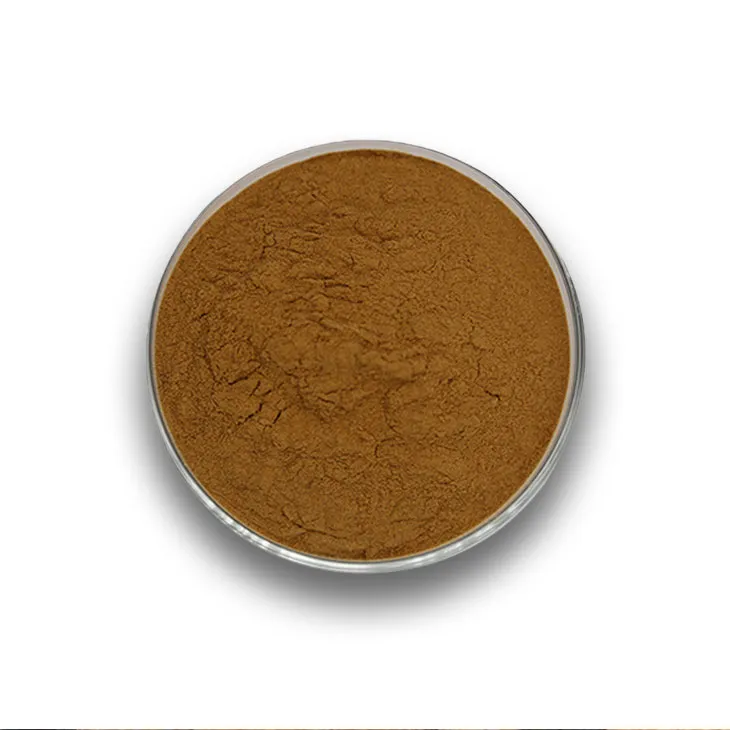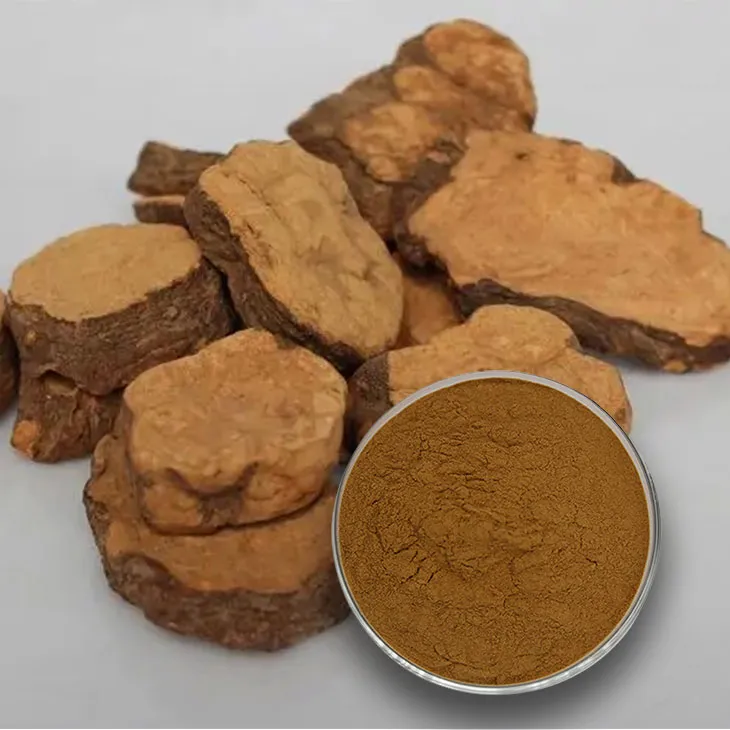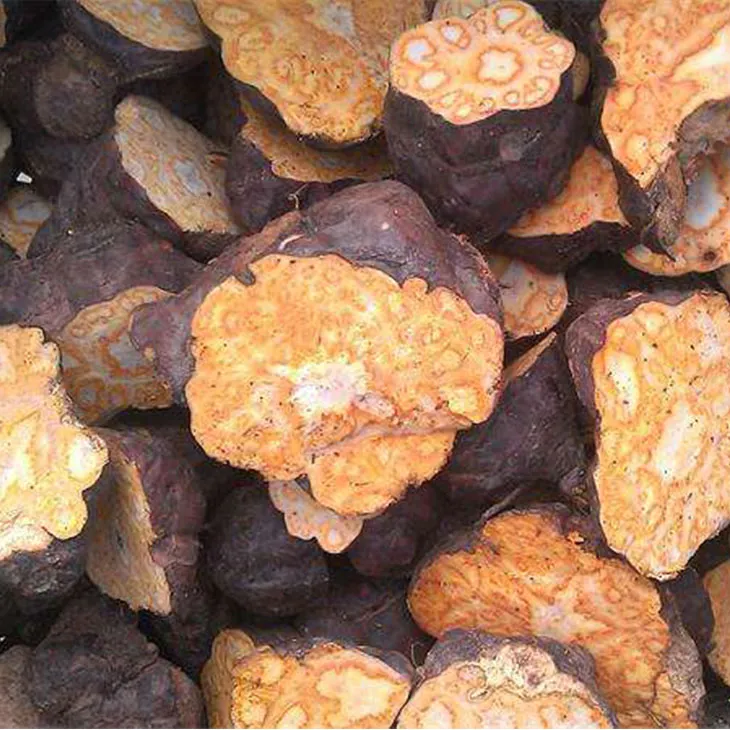- 0086-571-85302990
- sales@greenskybio.com
The best method for extracting Polygonum multiflorum extract.
2024-11-29

1. Introduction
Polygonum multiflorum is a well - known traditional Chinese medicinal material with a wide range of pharmacological activities. The extraction of its active ingredients is crucial for its application in medicine, cosmetics, and health products. This article aims to comprehensively explore the optimal methods for extracting Polygonum multiflorum extract from multiple aspects.

2. Chemical Composition of Polygonum multiflorum
Polygonum multiflorum contains various bioactive components, such as:
- Anthraquinones: These compounds play important roles in functions like laxative and antioxidant activities. For example, emodin and rhein are two typical anthraquinones in Polygonum multiflorum.
- Polyphenols: They are known for their antioxidant and anti - inflammatory properties. Resveratrol - like polyphenols in Polygonum multiflorum contribute to its overall health - promoting effects.
- Triterpenoids: Which may have potential effects on liver protection and immunomodulation.

3. Traditional Extraction Methods
3.1. Solvent Extraction
3.1.1. Ethanol Extraction
- Ethanol is a commonly used solvent for extracting Polygonum multiflorum. Firstly, the dried and powdered Polygonum multiflorum is soaked in a certain concentration of ethanol solution. For example, a 70% - 90% ethanol solution is often selected.
- The soaking time can range from several hours to days. Longer soaking time may lead to higher extraction yields, but it also may introduce more impurities. Usually, 24 - 48 hours is a common soaking period.
- After soaking, the mixture is filtered to obtain the ethanolic extract. The filtrate can be further concentrated under reduced pressure to get a more concentrated extract.
- Water extraction is a simple and environmentally friendly method. The Polygonum multiflorum material is boiled in water for a certain period. The ratio of Polygonum multiflorum to water can be adjusted according to the desired concentration, such as 1:10 or 1:15 (w/v).
- The boiling time usually lasts for 1 - 3 hours. However, water extraction may extract more polysaccharides and other water - soluble impurities along with the active ingredients.
- After boiling, the extract is cooled and filtered to separate the liquid extract from the solid residue.
3.2. Soxhlet Extraction
- The Soxhlet extraction apparatus is used in this method. The dried Polygonum multiflorum sample is placed in a thimble in the Soxhlet extractor.
- A suitable solvent, such as ethanol or a mixture of solvents, is added to the distillation flask. The solvent is then continuously refluxed through the sample in the thimble.
- This process can last for several hours to days until the extraction is considered complete. The advantage of Soxhlet extraction is that it can achieve relatively high extraction yields by continuously recycling the solvent. However, it is time - consuming and may require a large amount of solvent.

4. Modern Advanced Extraction Methods
4.1. Supercritical Fluid Extraction (SFE)
- Supercritical fluid extraction uses supercritical carbon dioxide as the extraction medium. Carbon dioxide is in a supercritical state under certain temperature and pressure conditions (usually around 31.1 °C and 7.38 MPa).
- Advantages of SFE include high selectivity, mild extraction conditions, and the ability to obtain a relatively pure extract. Since carbon dioxide is a non - toxic, non - flammable gas, it is also environmentally friendly.
- However, the equipment for supercritical fluid extraction is relatively expensive, which limits its widespread application in some small - scale production.
4.2. Microwave - Assisted Extraction (MAE)
- Microwave - assisted extraction utilizes microwave energy to accelerate the extraction process. The Polygonum multiflorum sample is mixed with a suitable solvent and placed in a microwave - transparent vessel.
- The microwave irradiation promotes the dissolution of active ingredients from the sample into the solvent. The extraction time is usually much shorter compared to traditional methods, often within minutes to tens of minutes.
- However, the uniformity of microwave heating needs to be carefully controlled to avoid local overheating, which may cause degradation of some active ingredients.
4.3. Ultrasonic - Assisted Extraction (UAE)
- Ultrasonic - assisted extraction uses ultrasonic waves to enhance the extraction efficiency. The ultrasonic waves create cavitation bubbles in the solvent - sample system.
- When these bubbles collapse, they generate high - pressure and high - temperature micro - environments, which can break the cell walls of Polygonum multiflorum and release the active ingredients more effectively.
- Compared to traditional extraction methods, UAE can significantly reduce the extraction time and may also improve the extraction yield. It is also a relatively simple and cost - effective method.

5. Factors Affecting the Extraction of Polygonum multiflorum extract
5.1. Particle Size of Raw Material
- Smaller particle size generally leads to a larger surface area exposed to the solvent. For example, when the Polygonum multiflorum is ground into a fine powder, the active ingredients can be more easily dissolved and extracted.
- However, if the particle size is too small, it may also cause problems such as clogging the filter during the extraction process.
5.2. Solvent Type and Concentration
- Different solvents have different solubilities for the active ingredients of Polygonum multiflorum. As mentioned before, ethanol and water are two common solvents, and their extraction effects vary.
- The concentration of the solvent also affects the extraction efficiency. For example, in ethanol extraction, different ethanol concentrations may result in different extraction yields of anthraquinones and other components.
5.3. Extraction Time and Temperature
- Longer extraction time usually increases the extraction yield to a certain extent. But as mentioned before, overly long extraction time may introduce more impurities.
- The extraction temperature also plays an important role. Higher temperature can accelerate the dissolution of active ingredients, but it may also cause the degradation of some heat - sensitive components.
6. Quality Control of Polygonum multiflorum extract
6.1. Identification of Active Ingredients
- Various analytical techniques can be used to identify the active ingredients in Polygonum multiflorum extract. For example, high - performance liquid chromatography (HPLC) can be used to separate and quantify anthraquinones, polyphenols and other components.
- Mass spectrometry (MS) can be combined with HPLC to further confirm the molecular structure of the detected components.
6.2. Purity and Impurity Control
- The purity of the extract should be controlled. Impurities such as heavy metals, pesticides residues, and other unwanted substances should be removed or limited to meet the safety and quality requirements.
- Methods such as purification by chromatography or filtration can be used to improve the purity of the extract.
7. Conclusion
There are multiple methods for extracting Polygonum multiflorum extract, each with its own advantages and disadvantages. Traditional methods such as solvent extraction and Soxhlet extraction are relatively simple and widely used, but they may have some limitations in terms of extraction efficiency and selectivity. Modern advanced methods like supercritical fluid extraction, microwave - assisted extraction and ultrasonic - assisted extraction offer higher extraction efficiency, better selectivity and shorter extraction time in some cases, but they also face challenges such as high equipment cost or complex operation. In practical applications, the choice of extraction method should be based on factors such as the required quality of the extract, production scale, and cost - effectiveness.
FAQ:
Question 1: What are the main factors affecting the extraction of Polygonum multiflorum extract?
Several main factors influence the extraction of Polygonum multiflorum extract. The choice of solvent is crucial. Different solvents can have different solubility for the active components in Polygonum multiflorum. For example, ethanol is often used due to its relatively good solubility for many of the bioactive substances. Temperature also plays an important role. Higher temperatures generally can increase the extraction rate, but excessive heat may cause the degradation of some active components. The extraction time affects the yield as well. Longer extraction times may lead to a higher amount of extract obtained, but there is also a risk of extracting unwanted impurities if it is too long. Additionally, the particle size of Polygonum multiflorum material matters. Smaller particle sizes usually provide a larger surface area for solvent interaction, which can enhance the extraction efficiency.
Question 2: Which solvents are commonly used in extracting Polygonum multiflorum extract?
Ethanol is one of the most commonly used solvents for extracting Polygonum multiflorum extract. It has the advantage of being able to dissolve a wide range of active ingredients present in Polygonum multiflorum, such as anthraquinones. Water is also sometimes used, especially when extracting water - soluble components. In some cases, a combination of ethanol and water in different ratios may be employed to optimize the extraction of different types of components. Methanol can also be considered as a solvent, but due to its toxicity, its use may be more restricted compared to ethanol.
Question 3: What are the traditional extraction methods for Polygonum multiflorum extract?
One traditional extraction method is decoction. In this method, Polygonum multiflorum is boiled in water for a certain period of time. The heat and water help to extract the active components into the liquid. Another traditional approach is maceration. Here, Polygonum multiflorum is soaked in a solvent (such as ethanol or water) for an extended period, usually several days to weeks. During this time, the solvent gradually extracts the desired substances from the plant material.
Question 4: Are there any modern extraction techniques for Polygonum multiflorum extract?
Yes, there are modern extraction techniques. Supercritical fluid extraction is one of them. Using supercritical carbon dioxide as the solvent can offer several advantages. It has a relatively low critical temperature and pressure, which is suitable for extracting heat - sensitive components in Polygonum multiflorum without causing significant degradation. Ultrasonic - assisted extraction is also popular. The ultrasonic waves can create cavitation bubbles in the solvent, which can enhance the mass transfer between the solvent and the plant material, thus increasing the extraction efficiency. Microwave - assisted extraction is another modern technique. The microwaves can heat the solvent and plant material rapidly and evenly, accelerating the extraction process.
Question 5: How to ensure the quality of Polygonum multiflorum extract during the extraction process?
To ensure the quality of Polygonum multiflorum extract during extraction, first, the quality of the raw material should be strictly controlled. Only high - quality Polygonum multiflorum should be used. Second, the extraction parameters such as temperature, time, and solvent ratio should be optimized based on scientific research. For example, avoiding excessive temperature and time to prevent the degradation of active components. Third, purification steps may be included after extraction to remove impurities. This can be achieved through filtration, centrifugation, or chromatography techniques. Fourth, regular quality testing should be carried out during the extraction process, including the analysis of the content of main active components and the detection of potential contaminants.
Related literature
- Optimization of Polygonum multiflorum Thunb. Extract Preparation and Its Antioxidant Activity"
- "Study on the Extraction Technology and Pharmacological Effects of Polygonum multiflorum"
- "A Review on the Extraction and Bioactivity of Polygonum multiflorum"
- ▶ Hesperidin
- ▶ citrus bioflavonoids
- ▶ plant extract
- ▶ lycopene
- ▶ Diosmin
- ▶ Grape seed extract
- ▶ Sea buckthorn Juice Powder
- ▶ Beetroot powder
- ▶ Hops Extract
- ▶ Artichoke Extract
- ▶ Reishi mushroom extract
- ▶ Astaxanthin
- ▶ Green Tea Extract
- ▶ Curcumin Extract
- ▶ Horse Chestnut Extract
- ▶ Other Problems
- ▶ Boswellia Serrata Extract
- ▶ Resveratrol Extract
- ▶ Marigold Extract
- ▶ Grape Leaf Extract
- ▶ blog3
- ▶ blog4
-
How to make powder with selenium yeast?
2024-11-29
-
Chinese β - Carotene Suppliers
2024-11-29
-
Lycopene Manufacturers from China.
2024-11-29
-
Organic plantain extract powder factory.
2024-11-29
-
The best calendula extract on the market.
2024-11-29
-
100% Organic Baicalin.
2024-11-29
-
Chinese Cocoa Extract Powder Manufacturers
2024-11-29
-
Bayberry Extract
2024-11-29
-
Fenugreek Extract Powder
2024-11-29
-
Red Vine Extract
2024-11-29
-
Mango flavored powder
2024-11-29
-
Saponin Extract
2024-11-29
-
Medicinal Marshmallow Extract
2024-11-29
-
Green coffee bean Extract
2024-11-29
-
Sea buckthorn oil
2024-11-29
-
Sophora Japonica Flower Extract
2024-11-29
-
Uridine-5'-monophosphate Disodium salt
2024-11-29





















